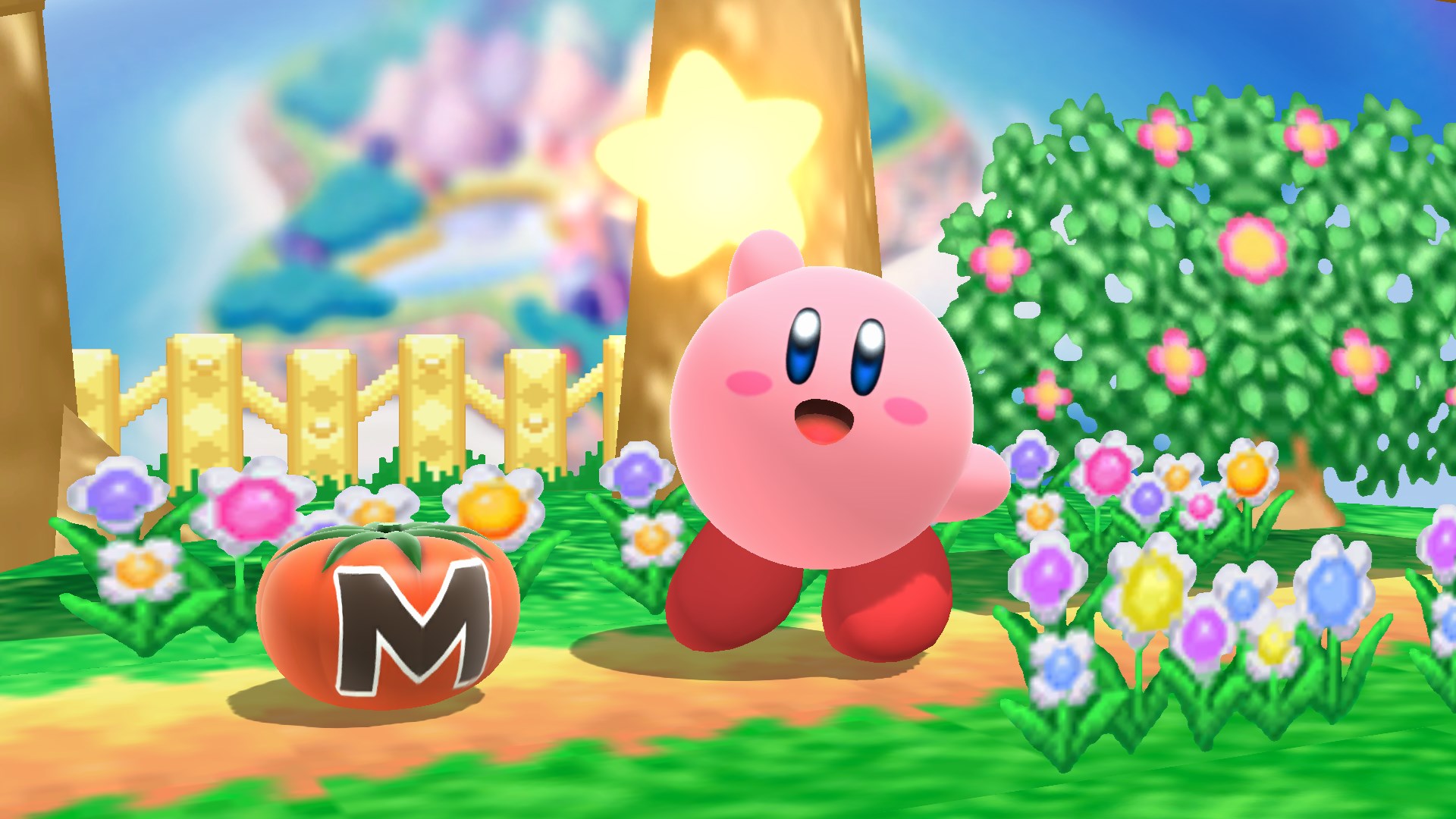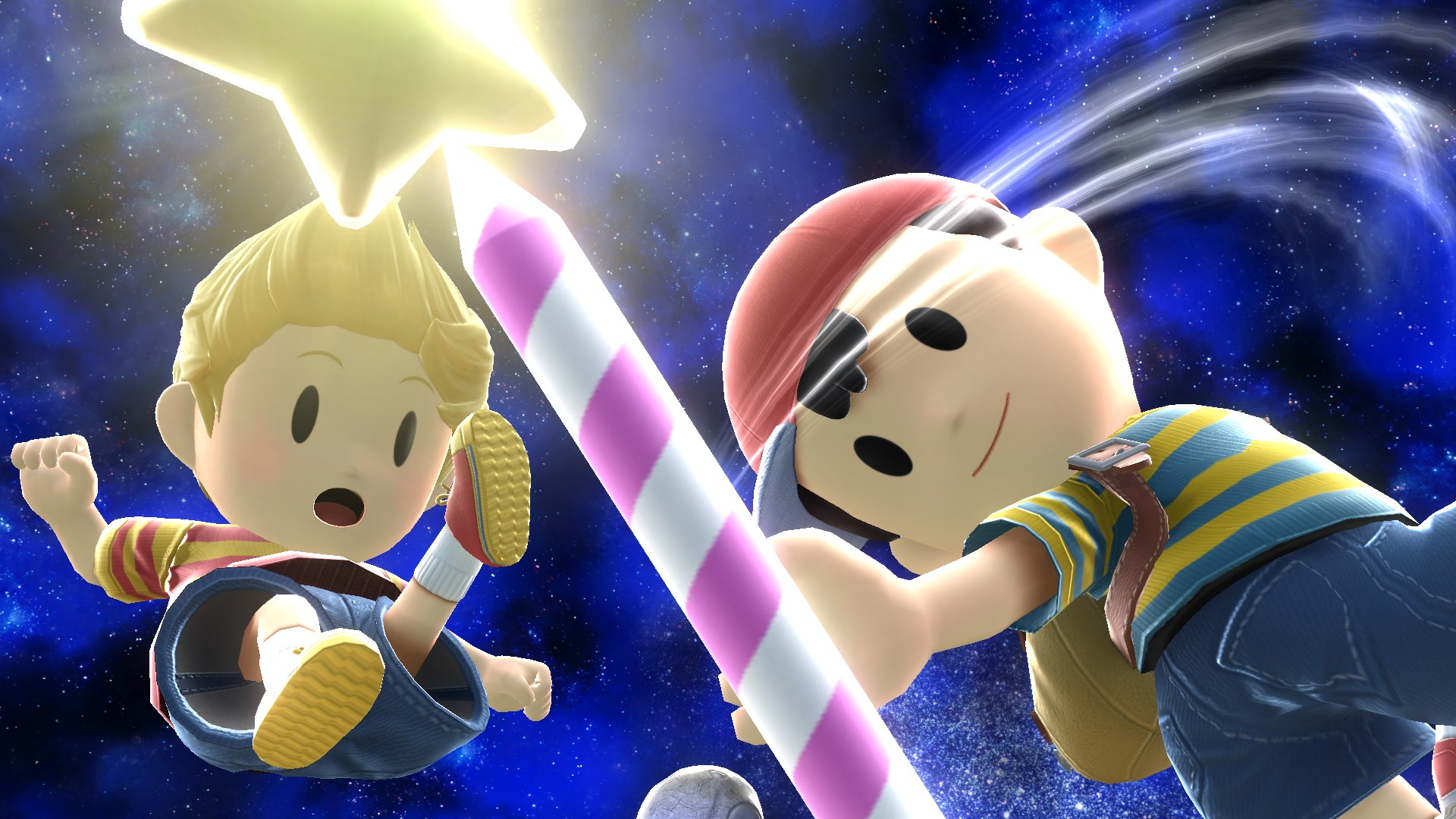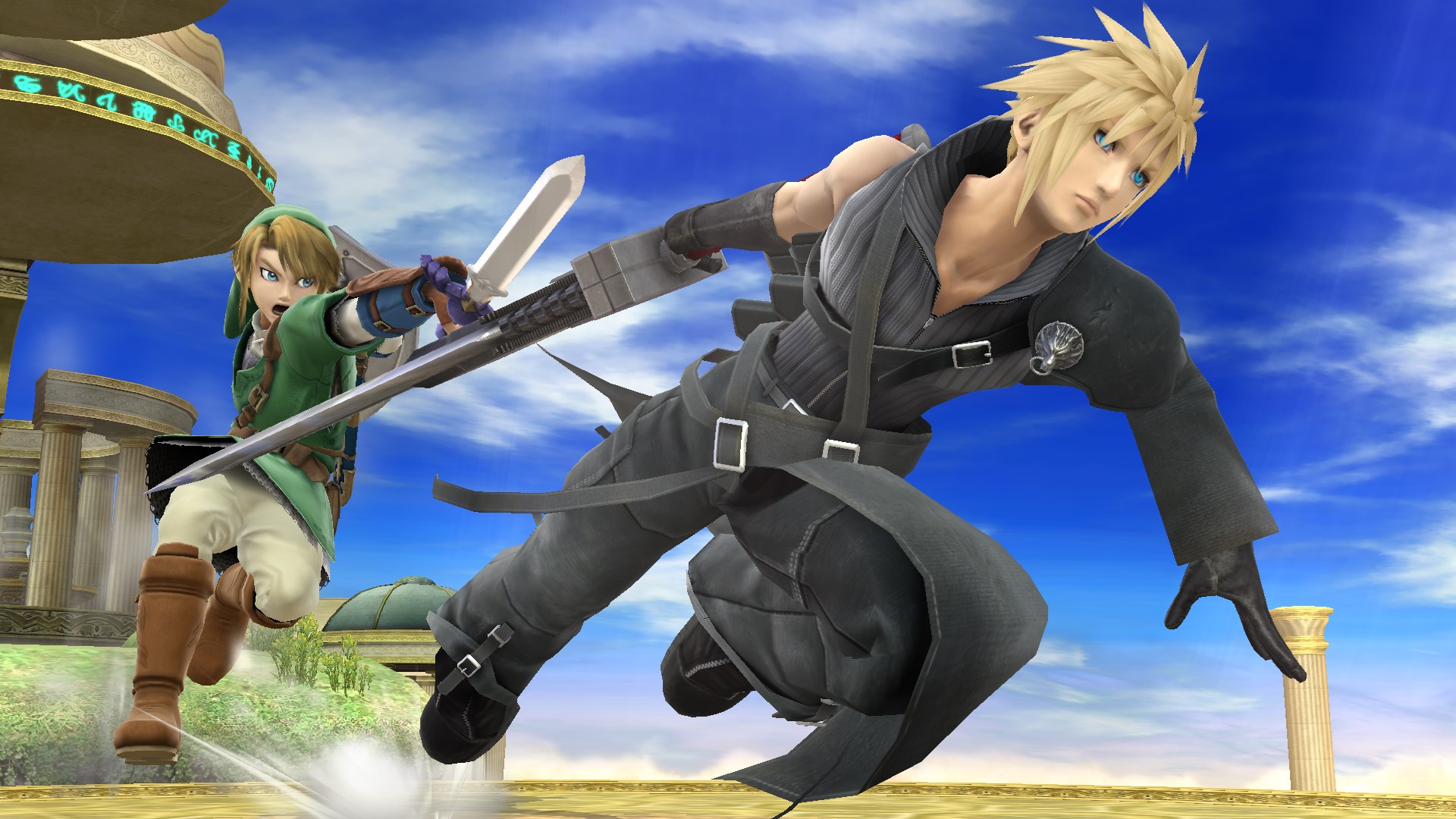Celebrating ten years of amiibo, Nintendo’s most successful experiment
This Thursday, November 21, marked a momentous occasion – the ten-year anniversary of amiibo, Nintendo’s beloved lineup of figurines and cards. Over the years, Nintendo has released over 200 unique figures and – if you count all the Animal Crossing cards – well over 800 amiibo in total. Given the recent news that the Nintendo Switch successor will include backwards compatibility with Switch software (and therefore amiibo functionality), it seems Nintendo is keen to continue increasing this number as the years go by. So today, we’re looking at the past, present, and future of amiibo figures, starting from its very beginning on this day ten years ago.
Humble beginnings

The very first amiibo were released alongside Super Smash Bros. for Wii U on November 21, 2014. From the beginning, they were sort of synonymous with the Super Smash Bros. series, and that’s something that’s remained true ever since. The first wave of figures included Mario, Donkey Kong, Link, Samus, Kirby, Fox, Pikachu, Yoshi, Peach, Marth, Villager, and Wii Fit Trainer at a price point of $12.99 each. You had the initial eight characters from the original Super Smash Bros., plus two characters from Melee and then two newcomers to Super Smash Bros. for Wii U. Though many bought amiibo solely for display purposes, their intended functional use was to train them in-game as customizable CPU fighters. The range and scope of what they could learn in Super Smash Bros. for Wii U and 3DS was rather limited, but this eventually changed in Super Smash Bros. Ultimate many years down the line.
As you might expect, figures like Mario and Link sold incredibly well. In fact, the Super Smash Bros. series Link amiibo is supposedly the single best-selling amiibo of all time. That said, not all of the twelve initial figurines were readily available. Popular characters like the aforementioned Mario and Link were in good supply, but a few of them disappeared off shelves almost immediately. Villager, Marth, and Wii Fit Trainer quickly became rare and incredibly sought-after, with many communities referring to them as the “holy trinity” of hard-to-find amiibo. This writer remembers receiving a Villager amiibo for Christmas that cost $60 because its initial stock was so low!
And unfortunately, stock issues are something that took years and years to be resolved. We said earlier that amiibo are synonymous with the Super Smash Bros. series, and that’s true – but in the early days, they were also sought after by hardcore collectors because they often sold out in mere minutes.
The start of store exclusives

Less than a month later, the second wave of amiibo figures released. This included Luigi, Diddy Kong, Zelda, Pit, Little Mac, and Captain Falcon. As you might expect, only Luigi and Zelda were in plentiful stock. The rest of them disappeared immediately, and their prices surged on second-hand retail sites. Things got much worse, however, with the release of wave 3 in February 2015. For the first time ever, certain amiibo figures were exclusive to specific retailers and could not be found elsewhere. You’d think that retailer-exclusive amiibo would perhaps have higher stock since you could only find them in one store, but that wasn’t the case at all. Whereas the first two waves of amiibo sold out in minutes, many store-exclusive wave 3 amiibo sold out in seconds.
The store exclusives this time around were interesting. Shulk was exclusive to GameStop, which made sense because the initial release of Xenoblade Chronicles on Wii was also exclusive to GameStop. Meta Knight was exclusive to Best Buy, Lucario was exclusive to Toys “R” Us, and Rosalina & Luma were exclusive to Target. Rosalina & Luma in particular sold out shockingly fast, and at the time her resale prices were higher on average than any other amiibo figure being resold at the time. Even the non-store exclusive wave 3 amiibo like Sonic, Mega Man, Sheik, King Dedede, and Ike sold out quickly. Then you had Bowser and Toon Link, who had slightly more stock available – but still not much.
This wasn’t the end of store exclusives, though. The fourth wave of amiibo was notorious for being not only the most difficult group of characters to buy, but one of Nintendo’s messiest product launches of all time. This wave included Charizard, Greninja, Jigglypuff, Lucina, Ness, Pac-Man, Robin, and Wario. There were many fan favorites here, specifically Lucina and Ness. You had Jigglypuff exclusive to Target, Greninja exclusive to Toys “R” Us, and Ness exclusive to GameStop. When online pre-orders were made available for these characters, every single one of them sold out immediately thanks to resellers and dedicated fans (mostly resellers). This left many collectors no choice but to wait outside of stores on the morning of May 29, 2015, which was also the release date of Splatoon and its associated three-pack of amiibo (which wasn’t sought out as much as the Super Smash Bros. amiibo were).
Things in-stores on May 29 weren’t looking good, either. Despite being GameStop exclusive, many outlets only received one single Ness amiibo, if any at all. Some didn’t receive any Lucina amiibo, nor Robin. Pac-Man was definitely the most well-stocked figurine, but that’s not saying much considering the competition is characters with one or two units sent to each store. What made this one of the messiest Nintendo launches of all time, however, was the fact that GameStop also opened up online orders for amiibo on May 29 as well. And the demand was so great that GameStop’s entire system crashed. This not only took down its website, but the entire in-store purchase infrastructure, so anyone in-store had to wait in line for hours for the system to be put up again. Many collectors who visited stores weren’t able to secure any figures at all, or had to leave before the systems went back up since they didn’t have time to stand there for hours and hours. It’s important to note that this meant that all GameStop stores were unable to handle purchases of any kind for a time on May 29 – the demand for amiibo was so great that it took down an entire store for a day.
The end of the Super Smash Bros. line?

In many ways, wave 4 was the peak of amiibo. There were stock problems and rare figurines after this, sure, but nothing as off-the-charts as what happened on May 29. The next few amiibo launches were relatively tame in comparison. Dark Pit, a Best Buy exclusive, launched two months later with a bit more stock compared to wave 4. Palutena became an Amazon exclusive for the first time, meaning that she could not be found in any physical stores in any capacity. Fortunately, there weren’t many Amazon-exclusive amiibo (only a couple more from here on out) – Nintendo may have realized it’s not a good idea to keep your products out of physical stores.
Wave 6 included Dr. Mario, Bowser Jr., Duck Hunt, Ganondorf, Olimar, R.O.B., Zero Suit Samus, and Mr. Game & Watch. Of these, R.O.B. had an interesting quirk: its colors were different depending on the region. In America, R.O.B. had a gray color scheme, and in Japan, it had a white-and-red color scheme. America would later receive the Famicom Colors R.O.B. amiibo, but Japan never received the American R.O.B. version. Mr. Game & Watch, being a very simple character, received swappable poses to make up for the fact that the amiibo still cost $12.99. In the Americas, Mr. Game & Watch was bundled with Duck Hunt and R.O.B. as part of a Retro 3-Pack that was exclusive to GameStop. By now, stock problems were starting to clear up – amiibo weren’t plentiful, per se, but Nintendo was starting to catch on to their popularity.
From here, the next few amiibo launches were fairly uneventful. You had Falco, the Miis, Mewtwo, and Lucas – collectors thought Lucas would be rare due to his relative obscurity, but it wound up being quite the opposite. In March 2016, we also got Roy, Ryu, and the aforementioned Famicom R.O.B. amiibo. In stark contrast to the older figurines, this bunch of characters became incredibly easy to find. So easy, in fact, that many of them were sold off to Five Below for the bargain bin. Even to this day, Lucas, Roy, Ryu, and Famicom R.O.B. are easy to find and not very expensive.
The final wave of Super Smash Bros. 4 was released in July 2017 – and little did we know that development on Super Smash Bros. Ultimate was well underway by this point. This wave included Cloud, Corrin, and Bayonetta, plus Player 2 alternate figures for each of them. The alts were exclusive, too: Cloud P2 to Best Buy, Corrin P2 to Amazon, and Bayonetta P2 to Best Buy. The exclusivity remained inconvenient for collectors (you had to place orders at three different retailers), and the stock numbers weren’t great. Player 2 Corrin (the female alt) was an Amazon exclusive, meaning that she was not available in any physical stores whatsoever. She sold out in just a couple of minutes, and to add insult to injury, Amazon shipped male Corrin to some collectors who had in fact purchased the female one. And since she had sold out at that point, Amazon could not offer a replacement unit. This led to Corrin Player 2 becoming the single rarest Super Smash Bros. amiibo for a time, with prices exceeding $200. Thankfully, Nintendo restocked Corrin Player 2 fairly recently, so she’s only worth about $17-$20 nowadays. That’s a much more reasonable asking price!
Animal Crossing amiibo antics

That marks the end of the Super Smash Bros. for Wii U and 3DS series of amiibo, but we’re forgetting something important that happened at around the same time: Animal Crossing amiibo. If you remember amiibo suddenly becoming much more common and not as highly valued in 2016, you can thank Animal Crossing amiibo for that. Nintendo responded to the incredible demand for Super Smash Bros. amiibo by creating a line of Animal Crossing amiibo for amiibo Festival, a game released for Wii U in 2015. These were produced en masse, because Nintendo thought they were going to sell like hotcakes. Unfortunately, Animal Crossing: amiibo Festival was not the game fans wanted. They were interested in a full-blown HD main series Animal Crossing game, not a shallow party title. As a result, the actual game flopped hard, and the amiibo figures released with it did not sell like Nintendo anticipated them to.
They sold so poorly, in fact, that many stores simply sold off their amiibo stock (including the aforementioned Lucas, Roy, Ryu, and Famicom R.O.B. amiibo, who were also in high supply) to discount stores and then drastically reduced their in-store display sizes for amiibo and toys-to-life figures in general. Nintendo eventually tried giving the Animal Crossing figurines a use by updating Animal Crossing: New Leaf with amiibo support and a big lineup of cards, and this did work to an extent. The cards wound up quite popular, especially for Animal Crossing: New Horizons many years later. The figures, however, are almost impossible to sell these days. They go for mere dollars on resale sites, and often sit there unsold for a long time. The Lottie amiibo in particular was a Target exclusive at the time, and was overproduced to the point where Five Below had giant bargain bins full of nothing but Lottie. In hindsight, it seems strange to manufacture so many units of an amiibo depicting a new character that nobody has any attachment to. You can find her on resale sites for less than $5 new-in-box to this day.
For better or worse (definitely worse), Animal Crossing amiibo sort of ended the incredible hype that had surrounded amiibo. The novelty wore off for some collectors, who had decided that they’d spent enough money on the figurines. Not to mention, people tend to flock to products they perceive as rare – and when that rarity disappears, so too does the motivation for a fair number of buyers. This leads us to the next (and current era) of amiibo figures. An era where stock still isn’t quite perfect, but it’s reasonable.
The Super Smash Bros. Ultimate era

The announcement of Super Smash Bros. Ultimate rekindled an interest in both amiibo collecting and amiibo training. And a ton of new Super Smash Bros. series amiibo were produced! For the sake of time, we’ll be going over some of the most notable releases. For the most part, the base game Smash Ultimate characters released without much issue. Interestingly enough, if you look at the Smash series Inkling amiibo against Ultimate’s in-game Inkling render, there are many differences – specifically in the facial expression and also the angle at which the Inkling is holding up the Splattershot. This implies that the Smash Inkling render was changed after the amiibo was already finalized. That’s a neat little tidbit!
On to more substantial things – the Smash series Joker amiibo was incredibly popular on release and sold through its stock quickly. Its resale prices went up to almost $90 for a time, but Nintendo eventually restocked it. That’s something Nintendo became very good about after Smash Ultimate: restocking old figurines. There have been tons of recent restocks, and even to this day more and more of them are being reproduced. The figurines do cost $15.99 now rather than $12.99, but that’s still better than paying $90 on a resale site for an out-of-box Joker!
The final three Super Smash Bros. amiibo, Pyra, Mythra, and Sora, were also incredibly popular on launch. Sora soon received additional stock, but at the time of writing, the same is not true for Pyra and Mythra (but that may change any day). And even though some of the figurines are hard to get, it’s nothing like how it used to be in the days of wave 4 and its website-crashing hype. With the recent news that the Nintendo Switch successor supports Switch software, it can be reasonably assumed that the Switch 2 will also continue to support amiibo. Which is to say, amiibo aren’t going anywhere anytime soon. Nintendo created these beloved little figures during a time where there wasn’t a ton happening on Wii U or 3DS – a happy distraction to keep people occupied (and its characters in the news) until the Nintendo Switch was ready. amiibo have integrated themselves with so many of Nintendo’s most loved series – Super Mario, Splatoon, Animal Crossing, Kirby, and of course Super Smash Bros. as well.
There’s a lot that can still be said about amiibo including figures for other games and franchises, its history, and its future. But we’re happy to see the line be such a success – all of its fellow toys-to-life competitors have pretty much died out, which says a lot about how much we love Nintendo’s characters and games. It also helps that amiibo are compatible with multiple games rather than just one. What’s your favorite amiibo collecting memory? How big is your collection? Whatever you have to add in celebration of 10 years of amiibo, we’d love to hear it down in the comments down below. If you’re interested in learning even more about them (if that’s even possible, after our history lesson), you can check out Nintendo’s official amiibo website here.
